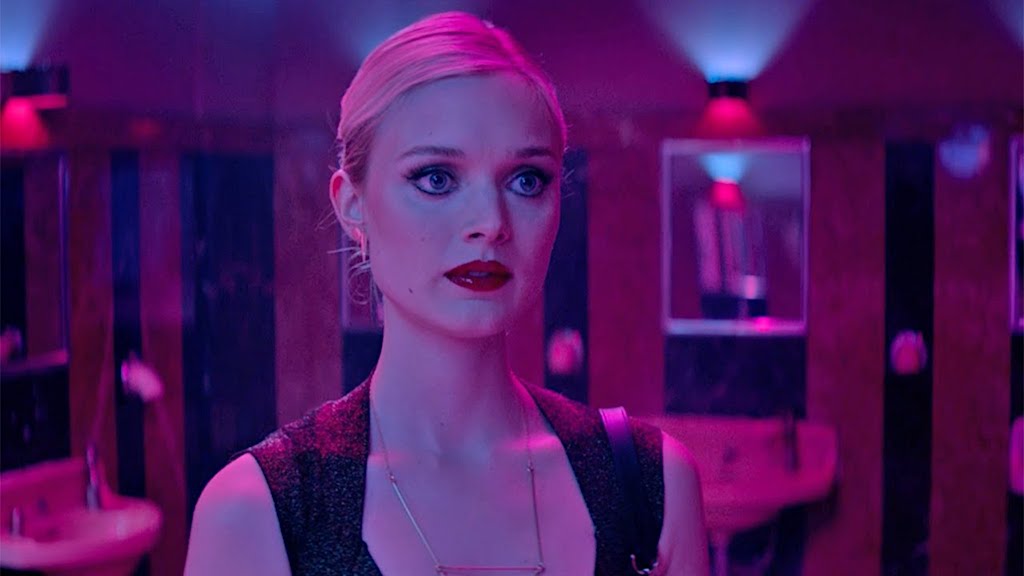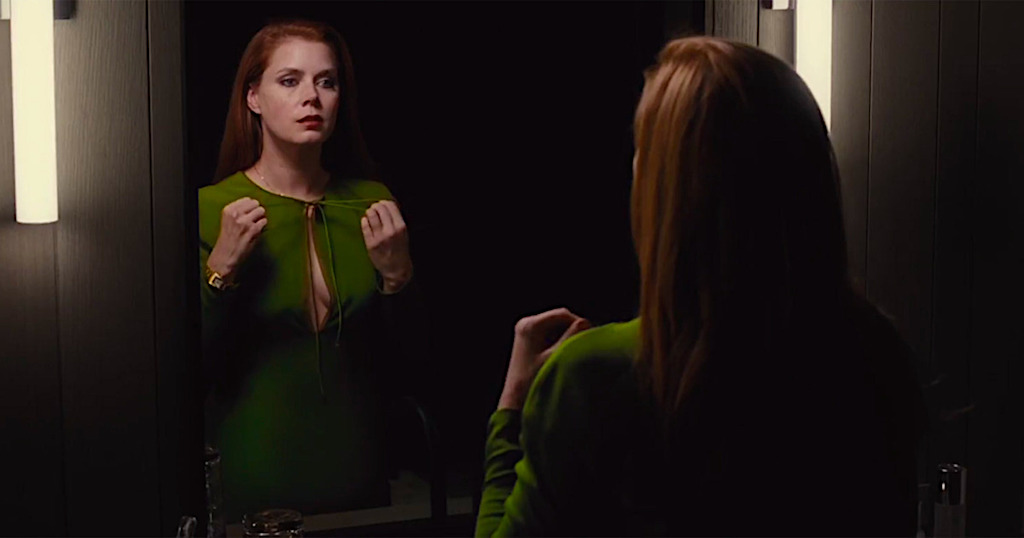A reminder this holiday season that style is substance, perhaps now as much as ever. This is the year in which “post-truth” became an actual thing, in which our President-elect ascended to his position on style, offering the world a psychotic marriage of the personalities of Adolf Hitler, George Wallace, and Ralph Kramden that’s terrifying yet visceral, spouting platitudes with a conviction that lends them a suggestion of, if not the truth, then at least a gratifying tactility of being. This is how people can indulge the flabbergasting suggestion that Donald Trump is a straight shooter who “tells it like it is” despite almost literally never telling the truth. Or, on a smaller yet telling level, take Christmas lights as another example of the style: They are the soul of what many think of when waxing nostalgic about the holiday, suggesting a new fictional world that sprouts up temporarily within our society, allowing us to furrow deeper than usual into a daydream. After the year we’ve had, it’s an understandable yet dangerous impulse, and I’ve certainly caught myself wandering my downtown in a daze, gazing at lights, drunk on sugar and high on caffeine, lost in nostalgia not for any holiday in particular but for the collected, theoretically innocent idea of “the Holidays.”
In popular culture, presentation is everything. We take socially agreed-upon symbols from art and equate them to something personal in ourselves, and that action sparks emotional resonance within us that vindicates us, allowing us to feel temporarily more complete than we probably are in actuality. When artists attempt to call attention to the contrivances of this relationship between themselves and their patrons, they are often resented, and their work is often dismissed as cruel, self-conscious, and shallow. These artists’ critics implicitly want them to trade idiosyncratic symbols for drab ones that suggest “seriousness,” which usually connotes a desire for workmanlike craftsmanship in service of a theme that’s been deemed socially important. This is how backlash can mount against, say, Wes Anderson, one of the greatest of contemporary American film directors. In the right hands, style heightened to the point that subtext becomes text adds a becoming dash of frankness to the commercial ritual of selling art to the populace.
Artists are fetishists who recognize themselves to be in a wonderful yet morally appalling situation: They live in their heads at least part of their lives and derive some measure of vindication for it. Even if they are struggling artists, their struggles almost certainly pale next to true struggle, if they still have the time and the physical and mental privacy to create their art. (They get to live with figurative Christmas lights.) This year, two unsurprisingly divisive films wrestle with the allure and the cost of this sort of privilege: Nicolas Winding Refn’s The Neon Demon and Tom Ford’s Nocturnal Animals.
Both films are made by people who’ve weathered justified criticism for seeming in the past to value sensation and provocation above other possible reactions, and who appear to have reached a new transcendent level in which they critique that impulse so as, paradoxically, to empower it. On the most literal level of filmmaking (theme and plot as explicated by dialogue and characterization), The Neon Demon and Nocturnal Animals are both studiously obvious. They are both deconstructions of the Los Angeles dream factory, which allows men to get rich off of exploiting disempowered others, primarily women, pitting them against one another in acts of cannibalization. Both films are ritzy, glitzy, twisty style pieces, high on neon and rarefied sex realms, high on the fumes of West Coast camp, on the genre tropes of noirs and horror films, and even on the first several waves of deconstruction of said tropes, as most famously represented by the films of David Lynch.

Refn and Ford have an insatiable hunger for a certain kind of chilly, deeply internally-digested melodrama. When a flamboyant supporting character advises the heroine of Nocturnal Animals to enjoy the “absurdity” of their wealth, one gleans that Ford is suspicious of the reassuring complacency of such a statement (which echoes the sentiments of moneyed white people who falsely equate Trump to Clinton or Obama), while also embracing it as his manifesto. He will enjoy the absurdity, and so will Refn, whose characters spout dialogue so ridiculously on-the-nose (“Beauty isn’t everything. It’s the only thing.”) that it does a loop-de-loop into comic abstraction. On one stratum, these films operate as parodies, but that isn’t the full story. More precisely, the sample parody as a pretext for indulging shopworn motifs, informing them with another variation of private agency. Or, simply: Refn and Ford are riffing on the potential poignancy of their own need to get off on things that have gotten many artists off before them, despite or because of the cost of such parasitism.
Separating The Neon Demon and Nocturnal Animals from lesser genre films is the extent to which Refn and Ford double-down on their obsessions. The filmmakers allow us to live in the perverted, even derivative dream worlds that preoccupy them. On paper, The Neon Demon is little more than a violent episode of Melrose Place, but the script doesn’t convey the life that Refn brings to this world. What critics of The Neon Demon appear to have missed is the intense loneliness of the film. Refn lingers with longing not just on the supple breasts and asses of his struggling fashion-model characters, but also on their eyes, which are empty in a fashion that connotes loss of soul rather than superficiality.
When Jesse (Elle Fanning) walks down her first runaway, Refn shrouds her singular form in the darkness that’s eventually broached by a geometric configuration, perhaps the titular entity, which might offer her the brief illusion of belonging that she’s not quite consciously chasing. Tonally, this scene is complemented by an earlier one in which Jesse’s first professional photos are taken by a cryptically pretentious photographer, who grabs her naked body as if to strangle her. Refn has the imaginative daring to emphasize the brief feeling of kinship between artist and subject that’s nestled like a golden ember within the outward violation. These hands touch Jesse’s neck and chest, and, briefly, she feels only their touch, rather than the context of their looming power.
If this scene were staged earnestly, with Jesse cowering or crying against the photographer’s more fully actualized violence, the film might have enjoyed the kind of press that greets more traditionally prestigious films—and allows us to digest their alleged importance without too many complicating nuances. But Refn candy-coats his film in slow-motion and in gorgeous Mario Bava-inspired bursts of red and blue light, and he blows the film’s primal emotions up even further with Cliff Martinez’s haunting score. He creates a deliberately hollow dream, asking us to fill the tragedy in between the lines.

Ford finds tragedy via a similar aesthetic avenue, contrasting his own L.A. playground with the fancifully brutal kidnapping scenario that springs from a novel written by a character in the film (played by Jake Gyllenhaal) as a kind of symbolic revenge against an ex (Amy Adams)—a fantasy within a fantasy within a fantasy. The great joke is that it’s this center-most fantasy that Ford stages with the conventionally straight face, suggesting that our deepest desires amount to recycled bits of kitsch that we’ve cumulatively digested. This lurid road thriller takes on a life of its own, though, particularly when a cop played by Michael Shannon arrives on the scene, unforgettably eaten up by disease and self-loathing. Everyone in the thriller novel is openly self-hating, which mocks the closeted hatred within the characters living on the outer shell of the framing narrative. Ford often equates overhead shots of a highway to a heart’s arterial system—the landscape offering a requiem for its anguished inhabitants.
The Neon Demon and Nocturnal Animals have several random, eerie commonalities. Both use the actress Jena Malone as an embodiment of stifled, miserable longing, and both effectively utilize a mic-drop ending, in which the films stop at the fulfillment of their emotional arc, leaving the plots dangling. This last point signals what Refn and Ford are truly after purity of stylistic artificiality, in which an audience comes knowingly to sate its emotional jollies, conscious of the prostitution of cultural communion. Style isn’t everything. It’s the only thing.




